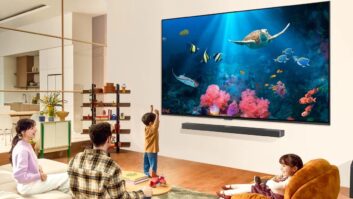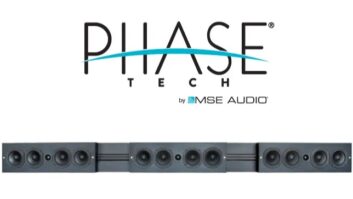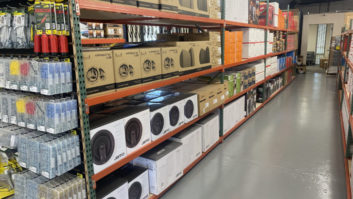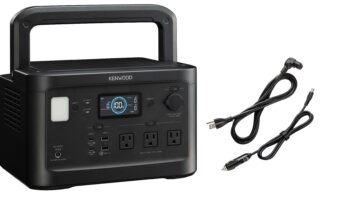INDIANAPOLIS —
Despite continued economic
pressures, the high end of the flat-panel TV market in
2011 should see modest growth as some consumers
tire of more conservative spending practices, according
to one DisplaySearch North America display products
market analyst.
“It is definitely not easy business, and we’re clearly
not back in the go-go days again, but the custom channel
[in flat panel] is holding its own this year, and we
are even seeing growth,” said Paul Gagnon, Display-
Search North American TV market research director,
speaking on flat-panel TV displays.
“The mid, high and ultra-high end of the market is
supported by the new models that include 3D, as well
as new and lower-priced LED models. While a portion
of this growth is supported by technological innovation
and pricing, a portion is supported by timing.”
Gagnon said part of the reason for the success is
the fact that “frugal fatigue has set in” with the wellheeled
set.
“Both manufacturers and clients have said that business
is picking up at the high end, and 3D is one of
the many ‘excuses’ for consumers to upgrade,” he
added. “Runco’s 3D model is now fully available and
supported strong growth in the $15,000-and-higher
segment during the second quarter. First-half volume
for the $15,000-and-higher price segment was up 14
percent and revenue was up 41 percent. Conversely,
the $1,000-and-over price segment posted a 32 percent
first-half revenue decline.”
But if it will last and whether or not manufacturers’
attempts to tap the activity will work remains an important
unanswered question.
“While the high-end TV business is attractive to
set makers for the higher [average selling prices] and
better profits, it seems that demand is still very limited
to a narrow segment of customers,” Gagnon said.
“The performance variance of flat-panel TVs across a
broad swath of brands is much narrower than it used
to be, even between plasma and LCD, so the wide
gap between the lowest- and highest-priced sets is
tough to justify.
“A 70-inch [LCD TV] from Sharp can be had for less
than $3,000 at Best Buy,” he continued. “But will it
will also be offered for $8,000 or so at MHT under
the Elite brand. Will some consumers see it as two to
three times as good? That’s a tough question.”
Gagnon said new features like LED, 3D and Internet
connectivity are not driving a new replacement cycle
as was hoped, and premiums have fallen quickly as set
makers resorted to lowering prices to push adoption of
higher-end features.
“This doesn’t benefit the high-end retailers who
thrive on differentiation and their ability to explain the
reason for asking more money,” he said. “It’s not something
I see changing much in the future.”
Gagnon said putting a lot of technology into a highend
video display is a risky proposition in the custominstallation
channel.
“Specialty retailers look to the package sale and
installation for profits, rather than individual hardware,
so including a very high-end TV with high
price points and lower margins eats into that profitability,
especially if the set will just be a monitor
in a home theater setup.” Gagnon pointed out. “So
extra features, beyond performance-improving ones
like high frame rates or superior contrast and color,
are not going to be needed in many cases. Specialty
retailers need a high performance, reliable and unobtrusive
display first and foremost without a lot of
extraneous bells and whistles. That was something
that used to be the purview of brands like Pioneer
plasma.”
As for the U.S. display market overall, Gagnon said
growth “is flattening, but the shift in channels seems
to be in the direction of converting laggard flat-panel
adopters, or discount retail in other words.”
He said he observed that “high-end channels have
an install base that has already likely fully converted to
flat panels fairly recently, and may be competing with
low-cost projection at larger screen sizes. It’s a tough
segment to operate in these days.”
“The end of dedicated high-end TV brands like
Pioneer and NuVision and high-end sub-brands like
Hitachi Directors Series, Sony Qualia or Panasonic
Onyx over the last five years or so only exemplifies this
point,” he added.













